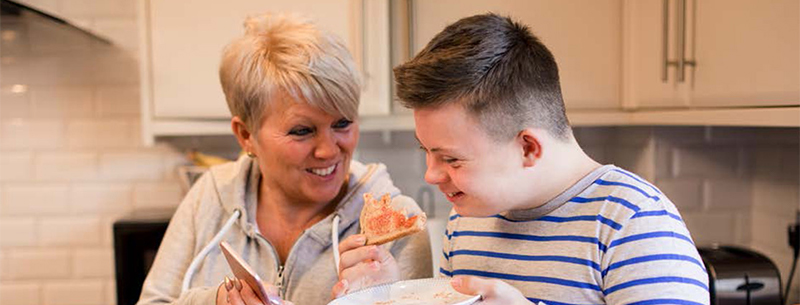Future planning: Transitioning to adulthood.
Moving through the teen years into adulthood can be a challenging time for young people, as well as parents or carers. It can be hard to know when to offer support and when to step back.
The transition to adulthood can be particularly difficult for people with a disability and their families as they navigate a changing landscape of emotions, relationships, decisions and desire for independence.
Research indicates that “youth with disabilities have reported that they have similar aspirations to their counterparts without disabilities, but there are more obstacles during the transition to adult life” (Transition to adulthood for youth with disability).
Early transition planning and clear communication are valuable strategies for managing this rite of passage and supporting your teen to become more responsible and independent.
An extract from the Leap in! ebook, Future planning: a guide for parents and carers.
The 6 steps in transition planning.
A transition plan can be a simple document that sets out the steps that support a transition. It not only gives you and your family an agreed plan of action, it can also be a valuable document to refer to when completing an NDIS Plan.
Step 1.
Write down your child’s strengths, skills, interests and abilities.
Step 2.
Work together to develop some short and long-term goals.
Step 3.
Write down the skills/qualifications, practical requirements and/or support needs associated with achieving those goals.
Step 4.
Identify which skills your child needs to develop or practice to reach their goals. The NDIS usually refers to learning new skills that increase independence as “capacity building”.
Step 5.
Talk with people who might be able to provide advice or support such as teachers, support workers, allied health professionals, doctors, government agencies, family members and friends. Research the funding available (through the NDIS or other programs).
Step 6.
Review the plan regularly and adjust as goals and aspirations change.
Aspects of life to consider when developing a transition plan.
It is recommended that a transition plan cover the following four areas of life. Include those that are relevant for the person you care for:
- Education
- Employment
- Independent living
- Social or community participation.
Types of transitions.
School to further education.
With many courses now available online, there are more options for further education than ever before. However, there are often additional barriers for people with a disability to overcome, which is why prior planning is important. Barriers may include the availability of suitable courses, accessible course structures and financial constraints.
The good news is that more people with a disability than ever are attending university, with enrolments increasing by 73.2% from 2007 to 2014 (Student equity performance in Australian Higher Education). Most universities and TAFE colleges have Equity and Diversity offices that promote inclusion and accessibility as well as provide student support. Government funding is available to educational institutions for disability-related supports such as sign language interpreters, notetakers and screen reading software.
Tips for further education planning.
- What steps can be taken to improve the chances of securing a place?
- Research courses available and how they are delivered.
- Check out campus facilities and access – it helps to visit in person.
- Is online study a more flexible, accessible option?
- Get in touch with the Equity and Diversity Office and see what supports will be available.
- Explore financial assistance options including equity scholarships, bursaries and HECS-HELP or FEE-HELP loans.
- Check out Attending university: How the NDIS can help for guidance on what the NDIS can cover when it comes to higher education.
School or further education to work.
Working can help build confidence, skills, independence and social networks. But finding a job if you have a disability can be tough and requires dedication and patience.
As a parent or carer, it can be challenging to watch a person you love go through setbacks but it’s important to encourage them to talk to someone they trust and ensure emotional support is in place throughout their journey to employment.
Adequate research and transition planning during high school years can help you both be more prepared for the next step into employment.
Leap in! has developed a range of handy resources to help:
Independent living.
“My child has flown the nest” is a fairly common refrain of parents whose kids have moved out of home. Transitioning your child or adult with a disability to independent living can be an emotional time.
See Preparing for independence and Options for independent living for more information.
Social and community participation.
Being involved in the community can be fulfilling, build confidence, develop skills and contribute to an overall sense of wellbeing.
Social isolation is common among people with a disability, particularly for people on the autism spectrum or people with an intellectual disability.
For this reason, it’s important to set social and community participation goals and ensure the steps to achieving them are appropriate to the individual.
The NDIS can assist in two ways:
- Increased Social and Community Participation – Capacity Building budget category covers development and training to increase skills to participate in community, social and recreational activities.
- Assistance with Social and Community Participation – Core supports budget category may fund a support worker to assist an NDIS participant to take part in social and community activities. For example, driving the person to and from the activity if they are unable to drive themselves or catch public transport.

